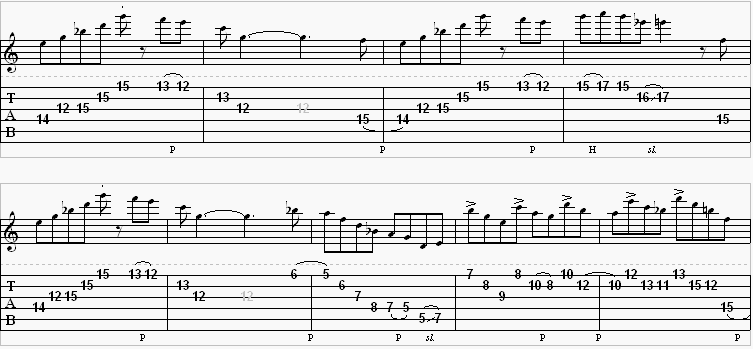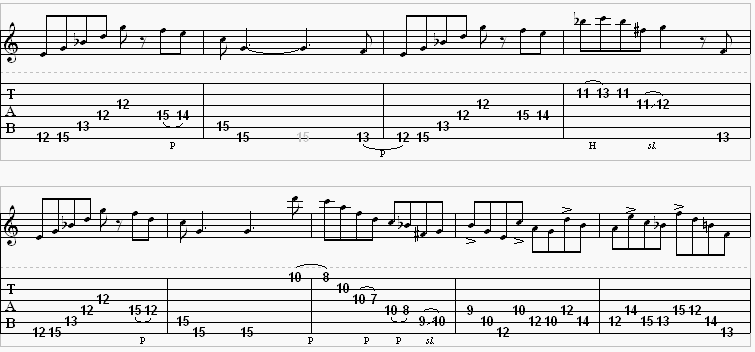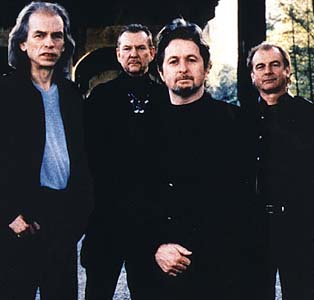Composer – Anderson
Where to find this song – Fragile track # 6
Release Date – January 1972
The Bio:
They were the longest-lasting and the most successful of the ’70s rock groups. Yes proved one of the lingering success stories from that musical genre. The band, founded in 1968, hit the generation gap with its audience and the departure of its most visible members at key points in their careers. Prior to signing their first contract with Atlantic, Yes opened for Cream’s farewell concert at the Royal Albert Hall in 1968 and then opened for Janis Joplin the following year. Former guitarist Steve Howe joined super-group, Asia in the early ‘80s.
Intro Riff
Ok. This riff will be pretty difficult to learn, but a challenge is always good, right? This riff will be broken down a little so that the parts aren’t quite so daunting to learn. The riff is full of pull-offs, hammer-ons, and slides. It has two guitar parts playing harmony.
Guitar 1

Video
Guitar 2

Video
Mute – The word mute comes into play quite often. The word is a little misleading. When you mute a string, it’s not that you aren’t allowing it to play, like when you hit mute on your television or CD player. What it means is that you aren’t allowing an actual NOTE to be played. Do this by barely touching the string, but playing it anyway. It provides an excellent way of keeping time in a song. Bass guitars do this quite often.
Measures one, three, five, and seven are identical. Measures two, four, and six are mostly also. Just remember that on the fourth measure, you won’t play the ninth fret on the “A” string. You will just mute it. On the sixth measure, you will be playing the eighth fret instead of the seventh, as well as no ninth fret on the “A” string.
To play the first measure, place your 3rd finger on the eighth fret on the “E” string. Play that once, and then mute the string. Play it again, and then use your 1st finger to play the seventh fret on the same string. Do the same thing on the “A” string to end the measure.
Use your 3rd finger again to play the tenth fret on the “A” string for the second measure. Mute it once, and then play it again. Play the ninth fret by using your 1st finger on the same string. To play the seventh fret on the “D” string, use your 1st finger. Mute it once, and then use your 3rd finger to play the tenth fret on the same string. End the measure by using your 2nd finger for the eighth fret on the “E” string.
For the eighth measure, place your 3rd finger on the tenth fret on the “A” string. Then, use your 1st finger for the fifth fret on the “E” string, and your 3rd finger for the seventh fret on the same string.
For the ninth measure, use your 2nd finger for the eighth fret on the “E” string. Use your 4th finger to play the tenth fret on the same string, and then end the measure by using your 2nd finger again for the eighth fret on the same string. That will transition you back to practicing the first measure again.
Riff Resources
Complete Transcription To “Long Distance Runaround” (PDF)
Complete Transcription To “Long Distance Runaround” (Power Tab)
